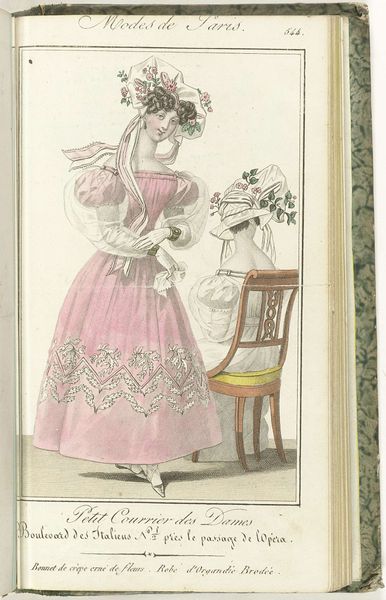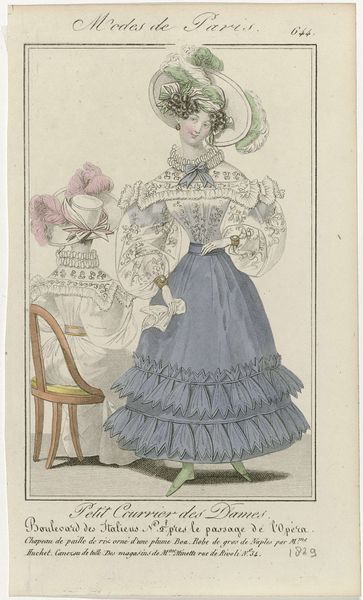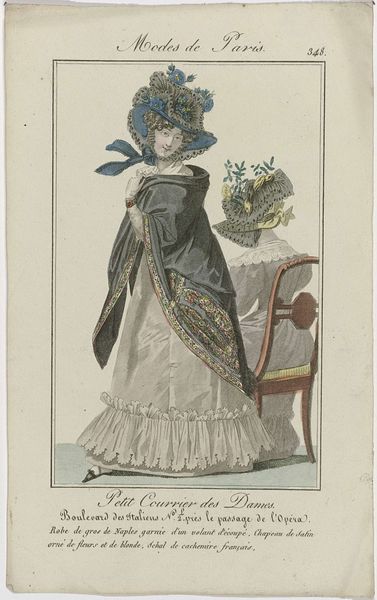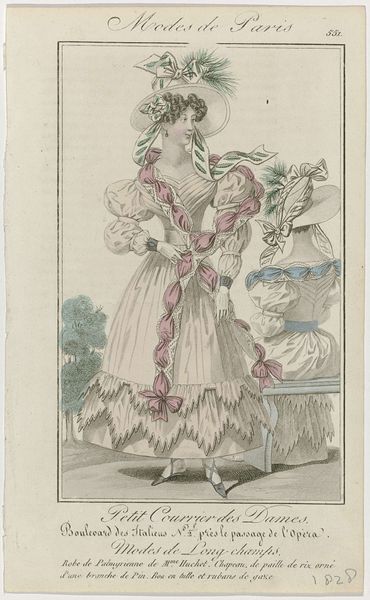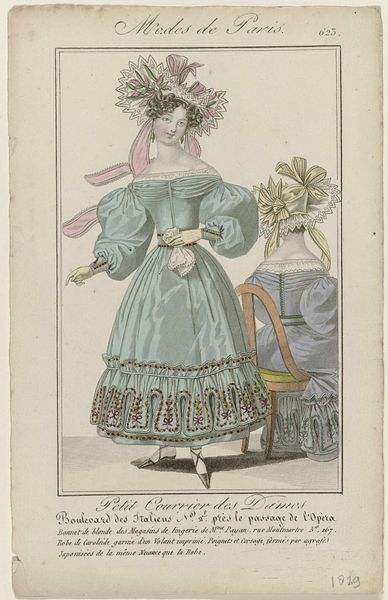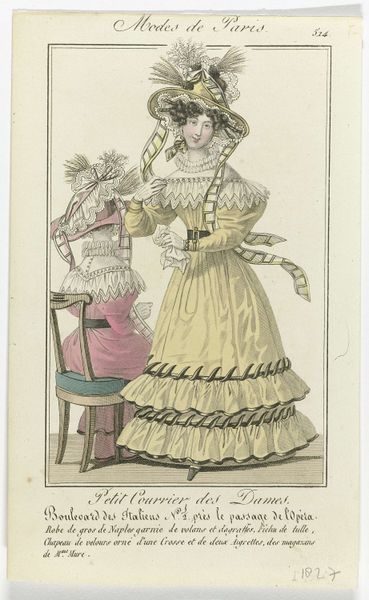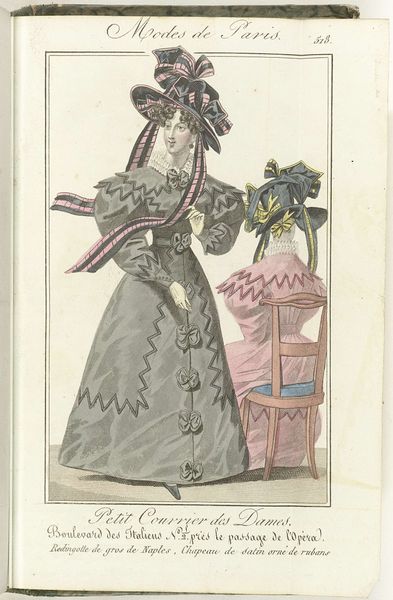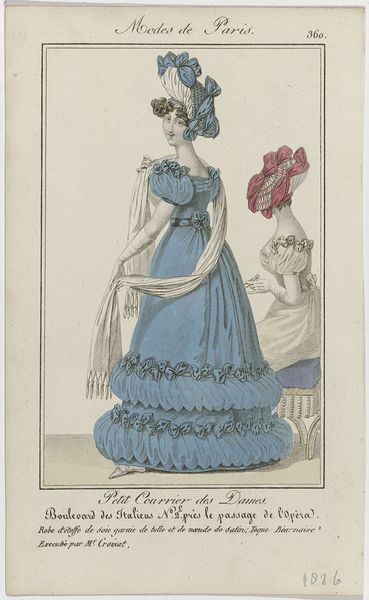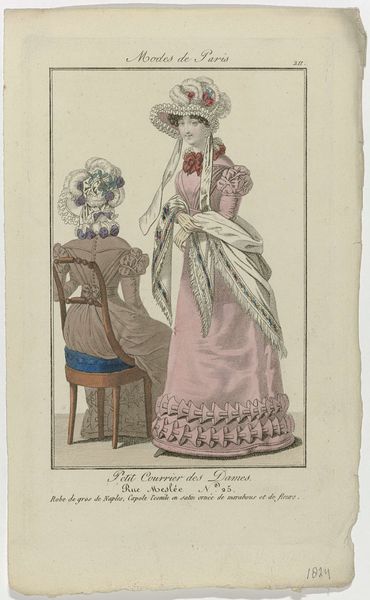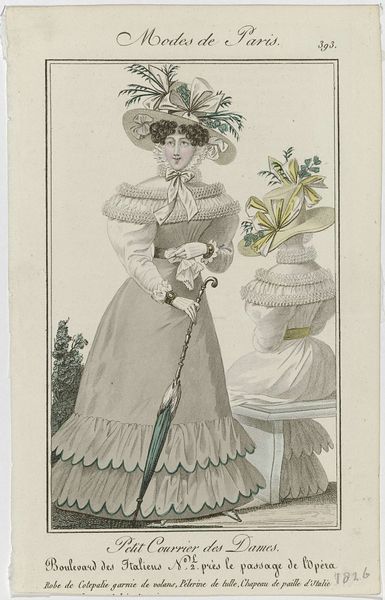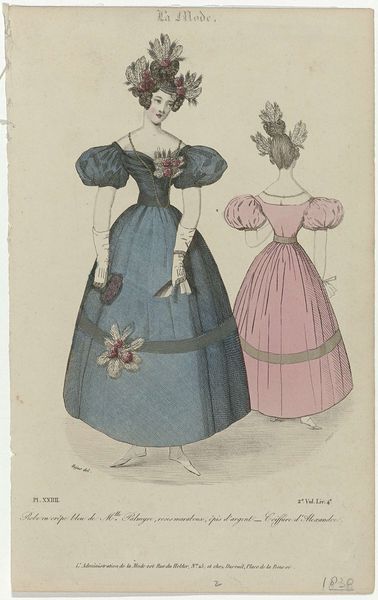
drawing, paper, ink
#
portrait
#
drawing
#
traditional media
#
paper
#
historical fashion
#
ink
#
romanticism
#
sketchbook drawing
#
watercolour illustration
#
genre-painting
#
decorative-art
#
dress
Dimensions: height 204 mm, width 122 mm
Copyright: Rijks Museum: Open Domain
This fashion plate, “Petit Courrier des Dames, 1827, No. 496,” was made anonymously in Paris using engraving and hand-applied color. These kinds of images were crucial to the fashion industry, which was rapidly industrializing at the time. Notice the dress, hat, and shawl depicted here. Each of these items required intensive, skilled labor. Textiles such as the ‘cotepali’ dress fabric were woven on mechanical looms, printed, and then assembled by dressmakers. Hats like this one would have been shaped by milliners, and trimmed with ribbons and feathers. Shawls were often made with lace, a labor-intensive process, or mass produced on weaving machines. These processes—from the extraction of raw materials to the distribution of the final product—depended on a globalized system of production. And, they relied on the exploitation of workers. So, next time you look at a seemingly innocuous fashion plate, consider the complex material and social histories it represents. It makes you think differently about what art is, doesn't it?
Comments
No comments
Be the first to comment and join the conversation on the ultimate creative platform.
